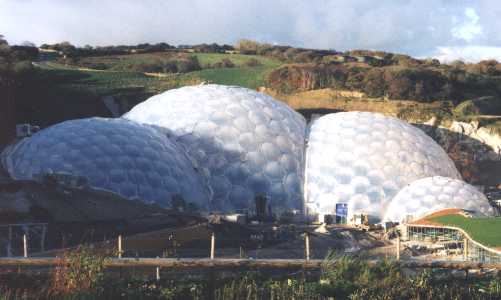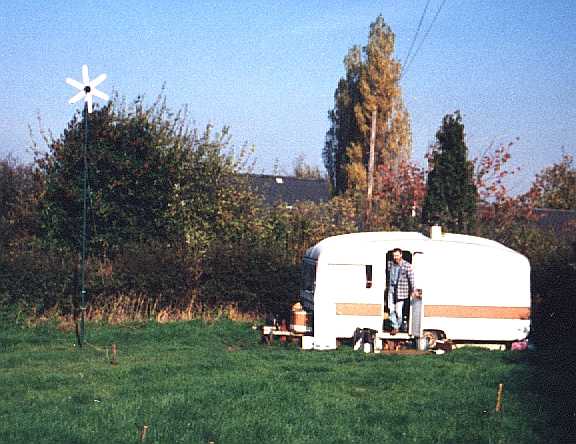
Home, initially was a 16' caravan, and this included living accomodation, sleeping area, cooking area, wood burning stove and office - complete with phone, fax and Apple Mac!
Nick is a consultant and author on sustainable development techniques specialising in water practices, in particular the treatment of waste water using natural reed beds.
At this time, Nick was reliant on wind generated electricity from the small Aerogen turbine on the left, a small amount of photovoltaic power, power storage in some 100Ah leisure type batteries and propane for cooking.. The computer, fax and lighting was either dc powered directly or through a small inverter.
During my stay, there was a severe frost overnight, and temperatures fell to about -7 centigrade. The pot-bellied wood stove provided almost instant heat and retained a little warmth for comfort whilst we retired to bed. The next day we were met with bright sunshine on a crisp Autumnal morning.
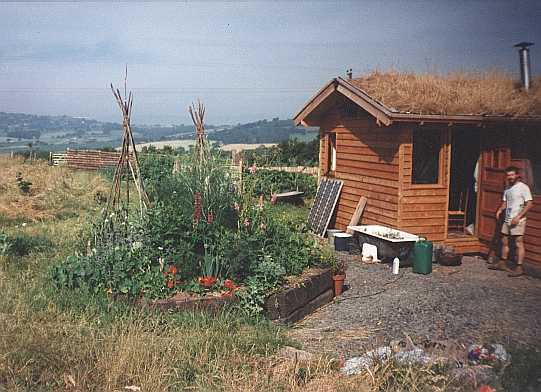
Note the photovoltaic panel propped up against the wall.
Nick's partner is a basket weaver by trade and the wind breaks have been woven from willow grown on the site.
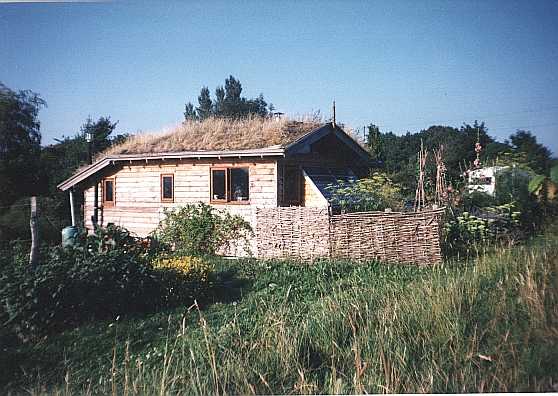
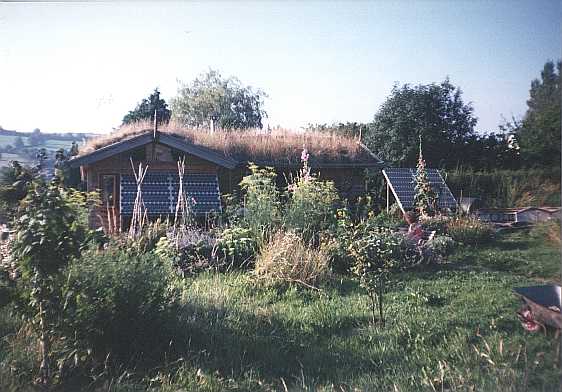
Elaine can just be seen relaxing in the garden.
The caravan can be seen in the background, it doubles up as a store and guest accommodation.
Nick is currently building a bungalow on te site using sustainable building techniques.
Nothing is wasted, as the existing living space will find a new role as storage or workshop space when the bungalow is completed.
I hope to be able to update this page on news of progress on this project as and when I get it.
There will be additional sections describing some of the techniques used in this sustainable development.
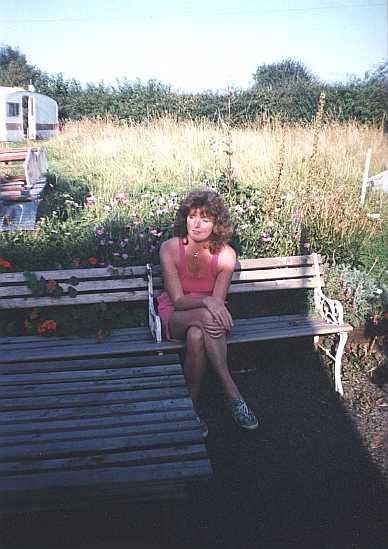
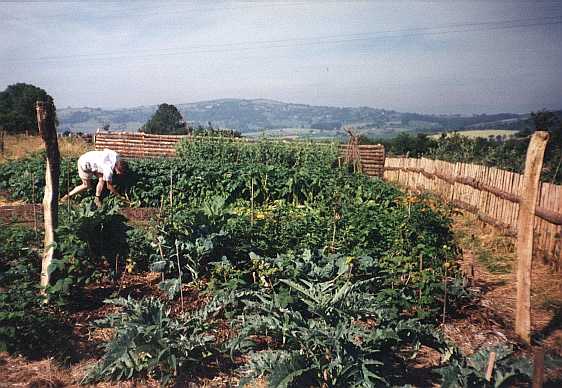
The 20th Century was the Century of Consumers, and without moderating our consumption, our existing lifestyles will not be sustainable over the next century.
Starting with the average weekly shopping trip, itself a major exercise in consumerism, think about the products you buy, how they are produced and where they come from. Consider the packaging materials used, the transport used to bring them to the store, and how you are going to carry them home.
Then at the end of the week, look at what is left. How much of that food was wasted, how much packaging has ended up inthe rubbish, and how much can be recycled, such as aluminium cans, bottles and newspapers?
If you then extend this exercise and consider your home as a whole, think about the energy consumption, gas, electricity and water used. How much water do you think you use in a day?
I'm not suggesting that we all give up our lifestyles overnight, but just think what we could do if we all reduced our consumption by 10%. This could be done tomorrow with a little careful thought, and you probably would adpt very quickly to the slight changes. Imagine if you got 10% better fuel economy from your car. To me that would mean saving about �150 per year and 3 trips to the filling station.
Elaine and I visited the Eden project on saturday 4th November 2000 in the last weak rays of Autumn sunshine.
This is the start of the Eden Project - a project to study plant life from around the world from within the confines of a 34 acre site in a disused china clay pit in Cornwall.
This photo shows the largest of the geodesic domes which will form the main plant conservatories. The largest is 80m tall and if you look carefully at the very top of the biggest dome you might just see next to the open hatch - two very small construction workers. The hexagonal panels are about 25 feet across.
In a few short words I cannot do justice to this fascinating project - so why not visit their website
Eden Project Website
